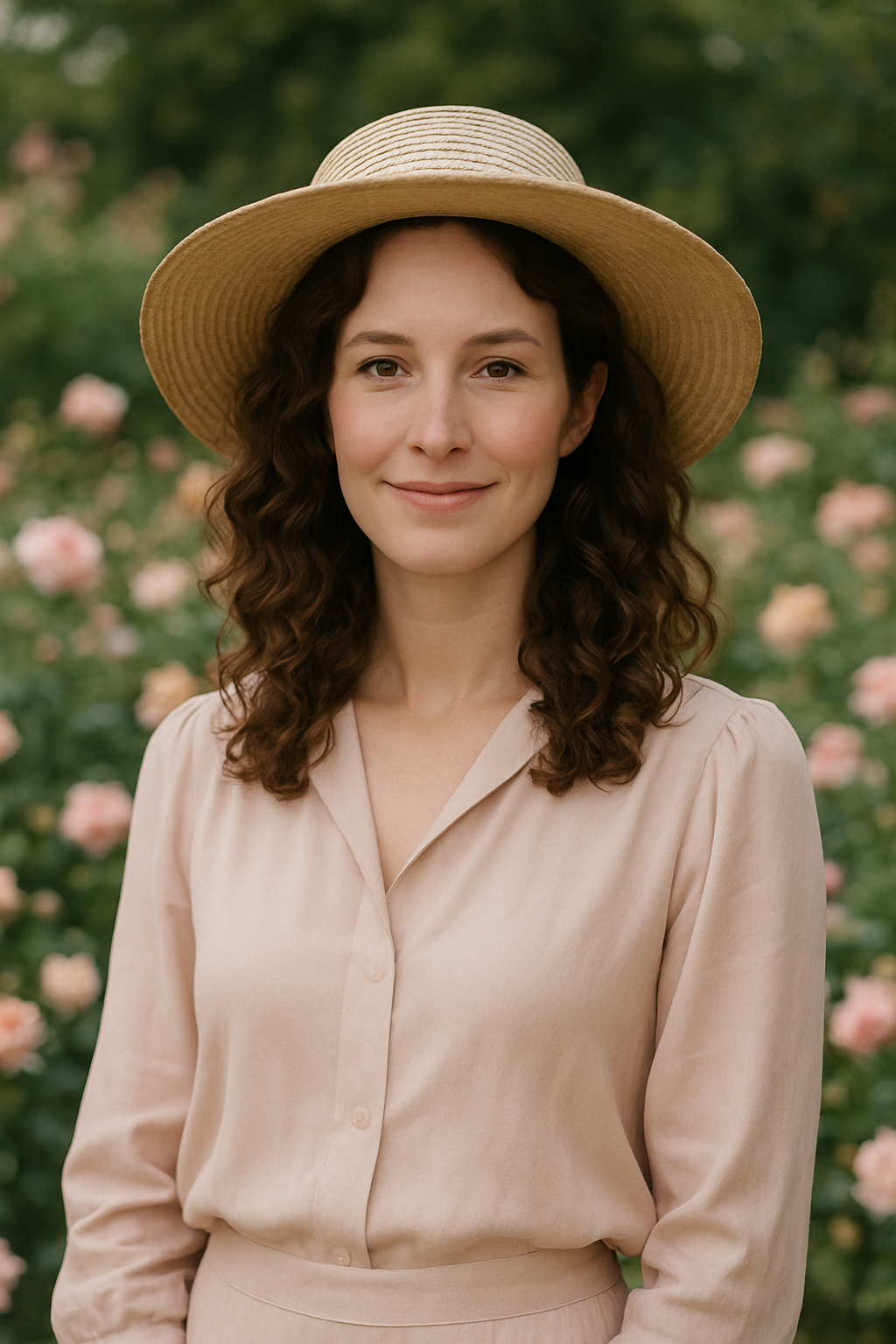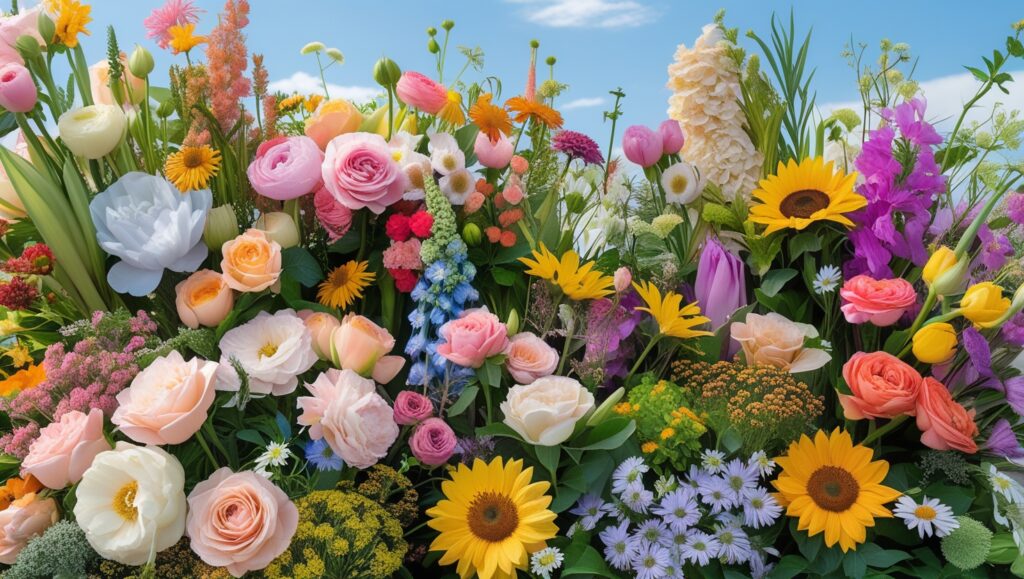
If you’ve ever dreamed of turning your love for flowers into a thriving business, you’re in the right place. I’m Flora Lane, and after years of working hands deep in the soil, I can tell you—growing flowers isn’t just about beauty, it’s about opportunity. When I first started, I had no idea which flowers would actually sell and which were just a joy for the eyes. Through plenty of trial, a few mistakes, and a whole lot of heart, I discovered that choosing the right, high-profit flowers can transform your garden into a steady income source.
In this guide, I’m going to walk you through what I’ve learned about picking flowers that not only bloom beautifully but also keep your bank account blooming. Whether you’re planting a small backyard patch or managing a larger farm, these tips will help you grow smarter and earn more in 2025.
Why Choose High-Profit Flowers?
When I started my small flower farm, I made the mistake of growing every flower I loved. While they looked stunning in the field, not all of them had a market value. That’s when I learned the power of high-profit flowers—plants that deliver both visual appeal and consistent earnings.
High-profit flowers often have:
- Strong demand in weddings, events, and local markets
- Longer vase life, which increases their value for florists
- Multiple bloom cycles, offering more harvest per season
By focusing on these flowers, you’re not just gardening—you’re building a sustainable income. And in 2025, with floral trends leaning toward locally-grown, seasonal blooms, there’s never been a better time to focus on profitable varieties.
Understanding Market Demand and Trends
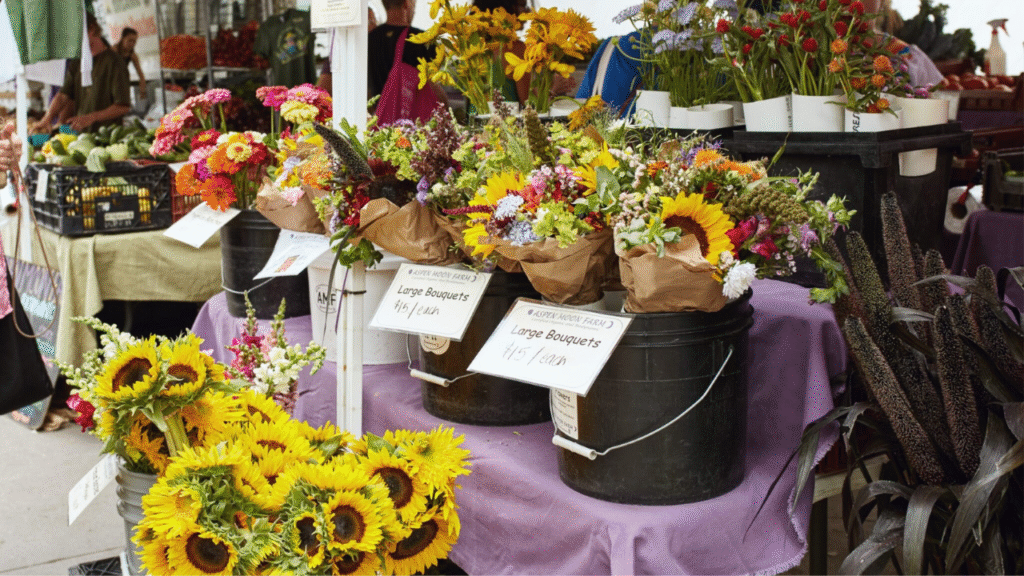
Every market has its favorites, and staying ahead of trends is key to success. When I started selling at my local farmer’s market, I realized how important it was to study what florists and brides were asking for. Peonies, ranunculus, and dahlias were always the first to sell out because they were trending on Pinterest and Instagram.
Tips to understand the market:
- Visit local flower shops and ask which blooms they frequently restock.
- Browse wedding magazines or Pinterest boards for current color palettes and floral styles.
- Pay attention to local events and seasonal demands—think spring weddings or fall harvest festivals.
In 2025, sustainable and locally grown blooms are highly valued. Flowers like zinnias, dahlias, and cosmos are gaining traction not just for their beauty but also for their eco-friendly image.
How Profitability Varies by Season and Region
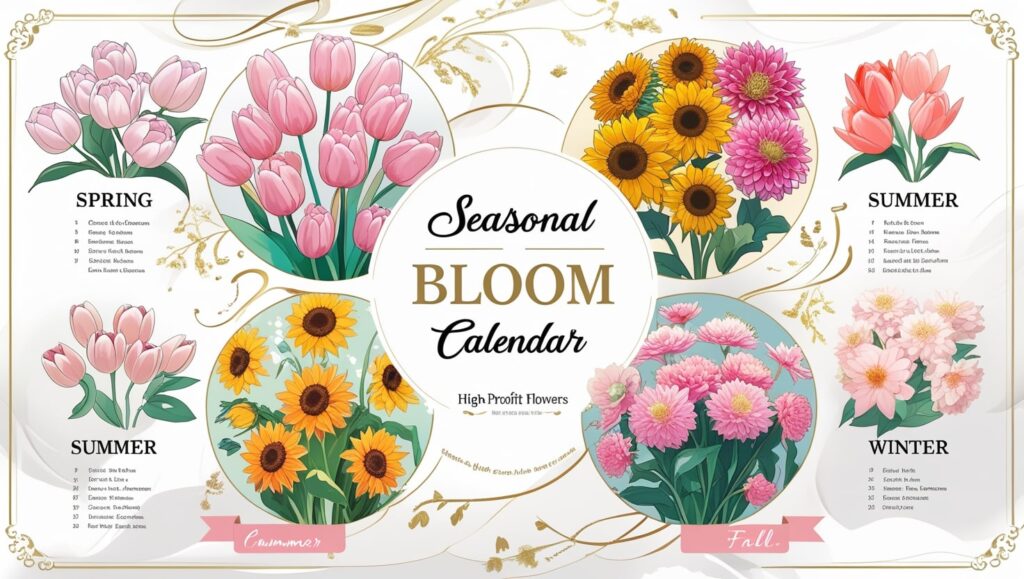
The flowers that make money in one region might not work as well in another. When I moved to a slightly warmer area, I had to rethink my crop plan. Some flowers thrive in cool spring weather (like tulips), while others, like sunflowers, prefer summer heat.
Seasonal profitability guide:
- Spring: Tulips, ranunculus, and anemones fetch premium prices due to early-season demand.
- Summer: Dahlias and sunflowers are wedding staples and sell consistently.
- Fall: Chrysanthemums and marigolds are popular for seasonal décor and festivals.
- Winter: Specialty greenhouse-grown flowers like amaryllis and paperwhites have high value.
Your local climate and growing zone will play a big role. For instance, if you’re in a colder region, focusing on spring bulbs and hardy perennials might give you an edge, while warmer areas can produce continuous blooms like zinnias and cosmos.
Factors That Determine Flower Profitability
Flower Lifespan and Harvest Cycles
One of the first things I learned on my flower farm is that how long a flower lasts after harvest directly affects how much you can earn. Flowers with longer vase life tend to fetch higher prices because florists and customers prefer blooms that stay fresh longer. For example, dahlias and ranunculus can last up to a week or more when properly handled, making them very desirable.
Additionally, harvest cycles matter. Flowers that bloom multiple times a season, like zinnias or sweet peas, give you repeated income opportunities. In contrast, some flowers bloom only once a year, limiting how often you can sell them. I always try to balance my flower garden with a mix of both types to keep cash flow steady throughout the growing season.
Growing Costs vs. Selling Price
Profitability isn’t just about what your flowers sell for—it’s also about how much they cost to grow. Specialty flowers like peonies and lisianthus require more care, sometimes needing greenhouse space or extra pest control, which adds to your expenses. On the other hand, flowers like sunflowers and zinnias are hardy and cheap to grow, making them excellent for beginners or those on a tight budget.
Here’s a tip from my experience: keep track of all your costs—seeds, soil amendments, labor, water, and packaging—so you know exactly where your money goes. Then compare it with your average selling price to find your true profit margin.
Demand from Florists, Weddings, and Subscription Boxes
Understanding who is buying your flowers is essential. When I started, most of my sales came from local florists and farmers’ markets. But over time, I noticed subscription flower boxes becoming hugely popular. These services want unique, fresh flowers delivered regularly—perfect for growers with reliable harvests.
Weddings remain a lucrative market, especially for premium blooms like peonies and lisianthus. Florists and brides often seek seasonal, locally-grown flowers that add a personal touch to arrangements. Knowing the preferences of these buyers helps you tailor what you grow and when to harvest for the best prices.
Top 10 Most Profitable Flowers to Grow and Sell
Here’s a list of flowers that have consistently brought me good returns over the years. I’ll share a little about each, including why they’re profitable and tips for growing them well.
Dahlias
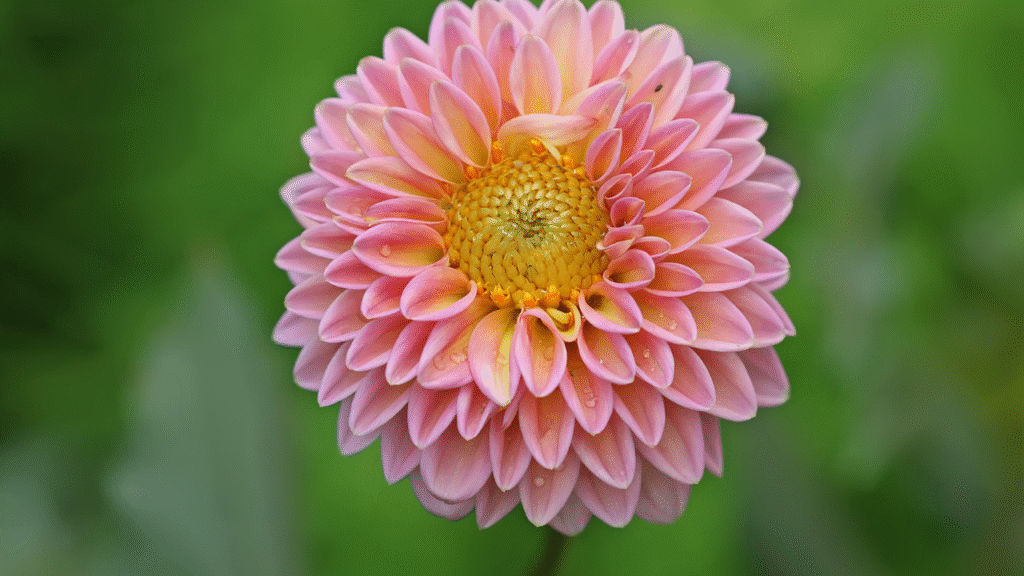
Dahlias are show-stoppers in any bouquet. Their vibrant colors and unique shapes attract premium prices. They bloom from mid-summer to fall and have a decent vase life. Plus, they can be divided and replanted, extending your stock for next season.
Lisianthus
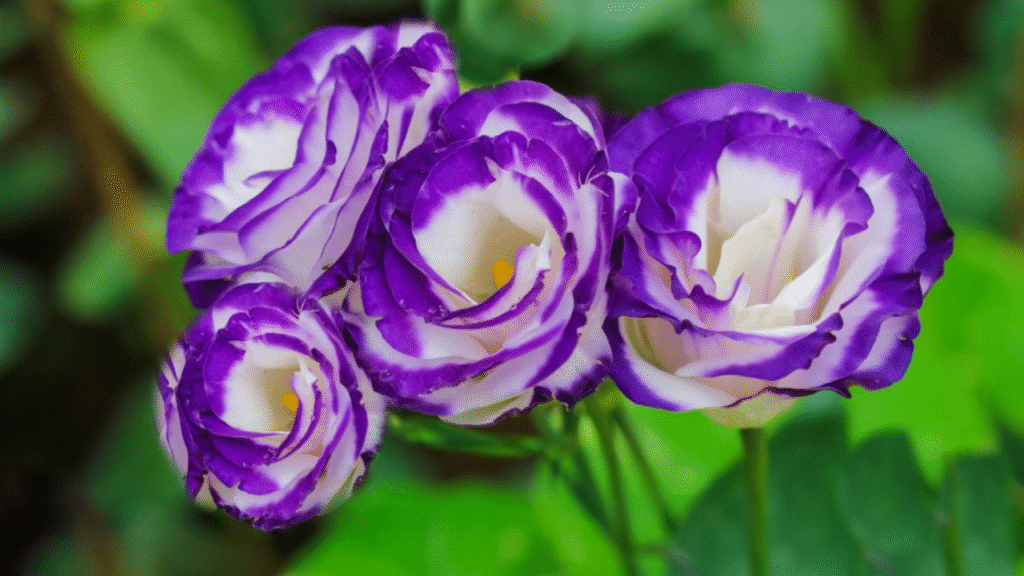
This delicate flower is a florist favorite due to its rose-like appearance and long stems. Lisianthus requires a bit more attention and often greenhouse space but pays off with high demand in weddings and floral shops.
Peonies
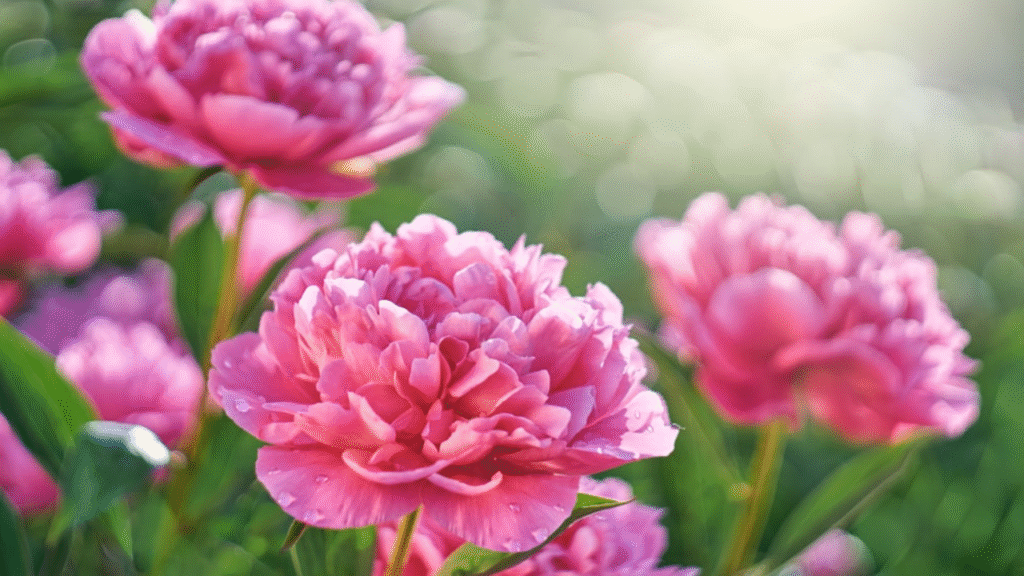
Peonies have a short but highly lucrative season in late spring. Their lush blooms are in high demand for weddings and special occasions. They need patience since they take a few years to establish but are worth it.
Specialty Tulips
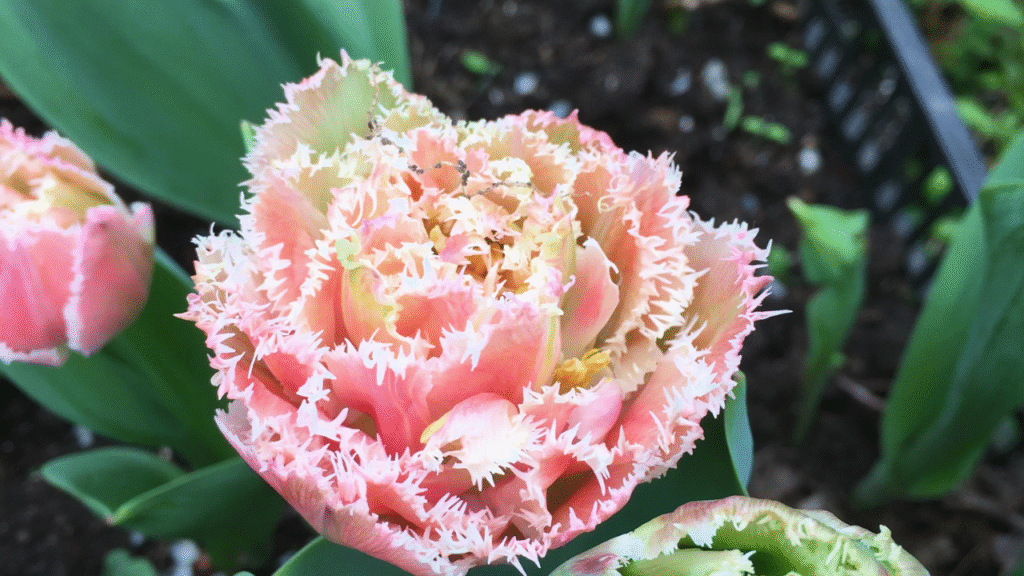
Not your everyday tulips—specialty varieties with unique colors and shapes command better prices. Early spring bloomers, they require cold weather and careful planting but attract buyers looking for something different.
Ranunculus
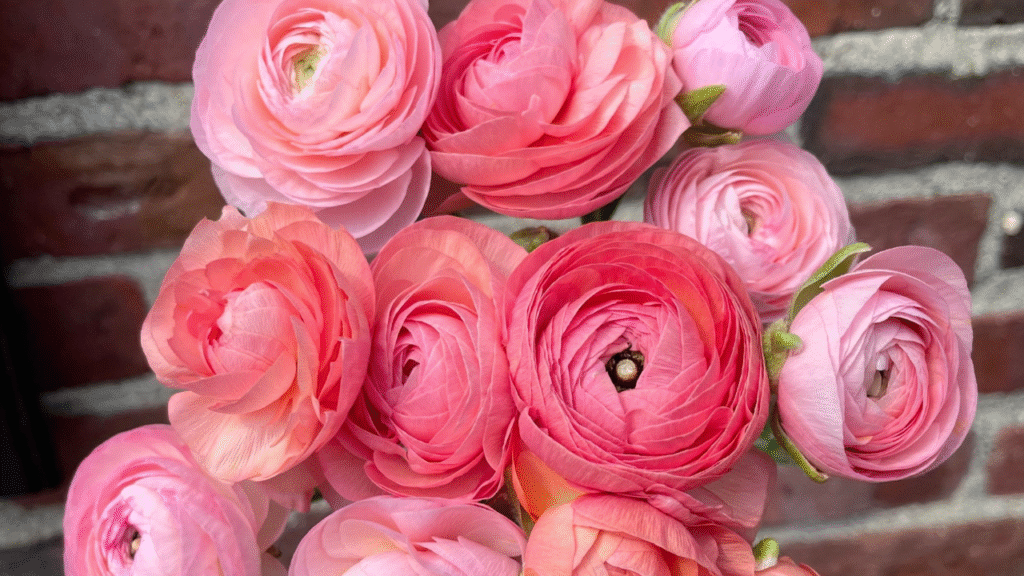
With their layered petals and bright colors, ranunculus flowers are a wedding staple. They bloom in spring and early summer and need well-drained soil and cool temperatures.
Eucalyptus and Greenery
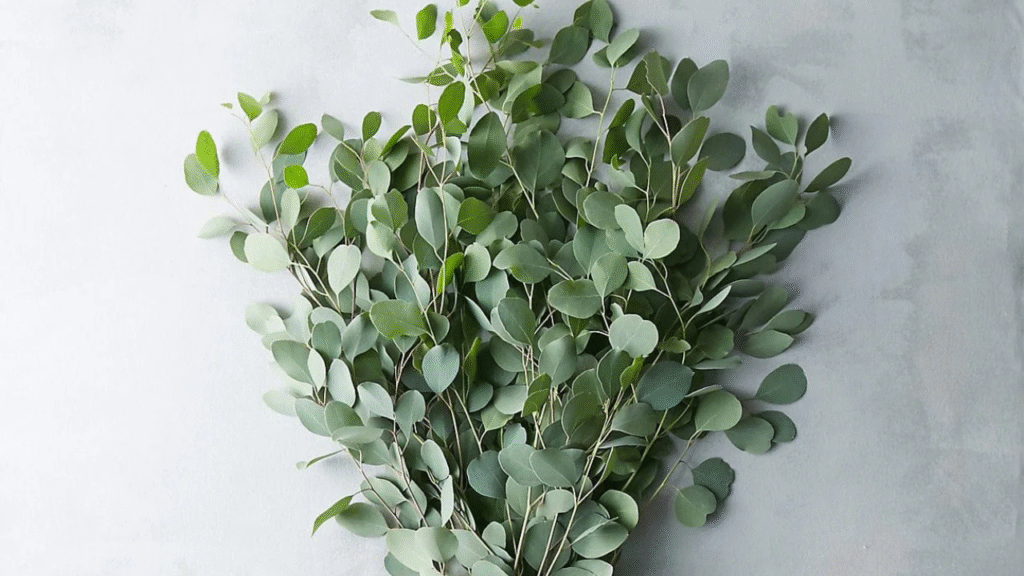
Don’t overlook greenery! Eucalyptus and other filler plants are essential in arrangements and often have steady demand. They grow relatively easily and add value to your bouquets.
Zinnias
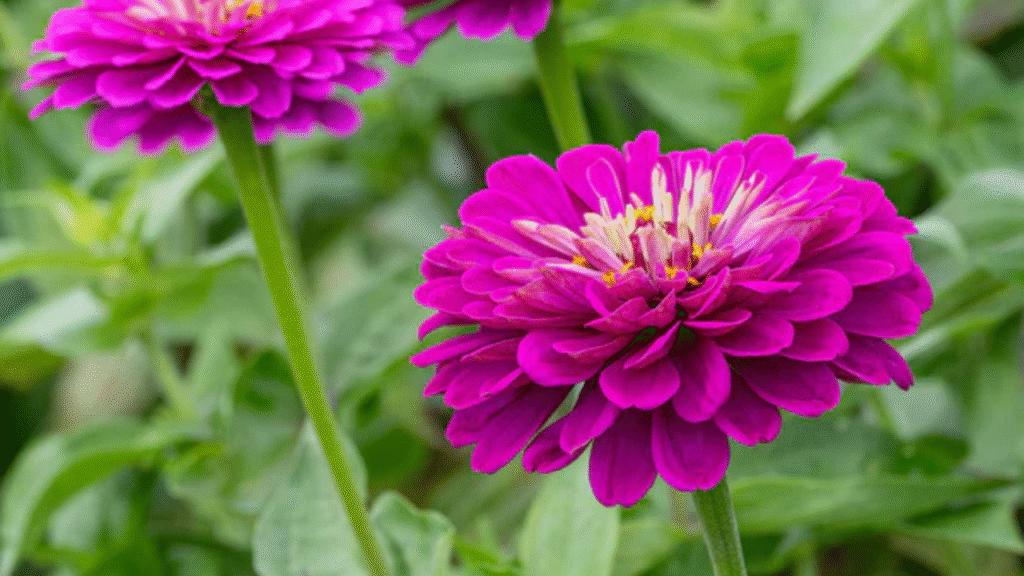
Zinnias are easy to grow, bloom continuously through summer, and offer a variety of colors. Their long stems and vase life make them popular for casual bouquets and subscription boxes.
Sunflowers
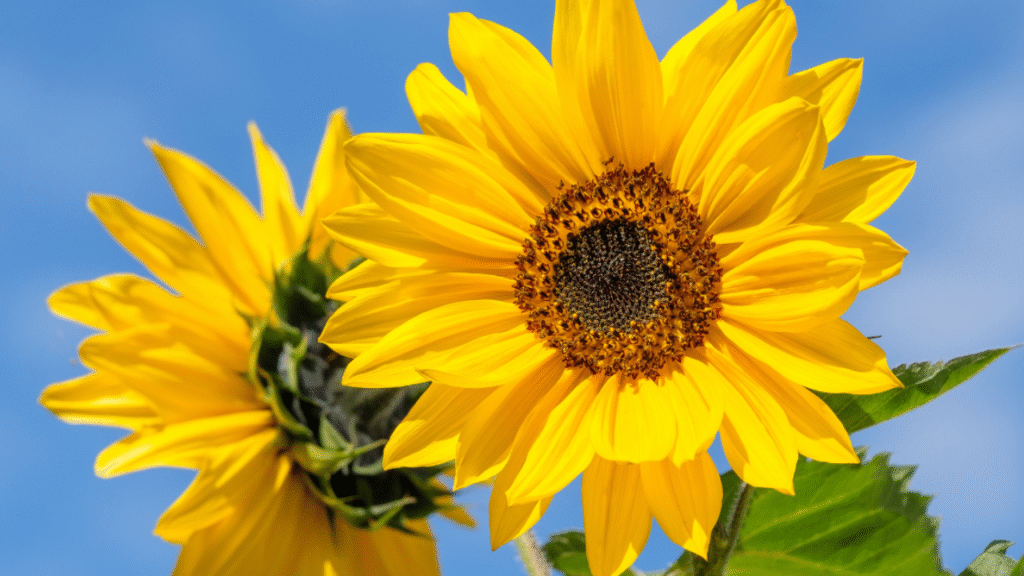
Sunflowers are iconic and profitable, especially in late summer. They’re easy to grow in large quantities and attract both retail buyers and event planners.
Sweet Peas
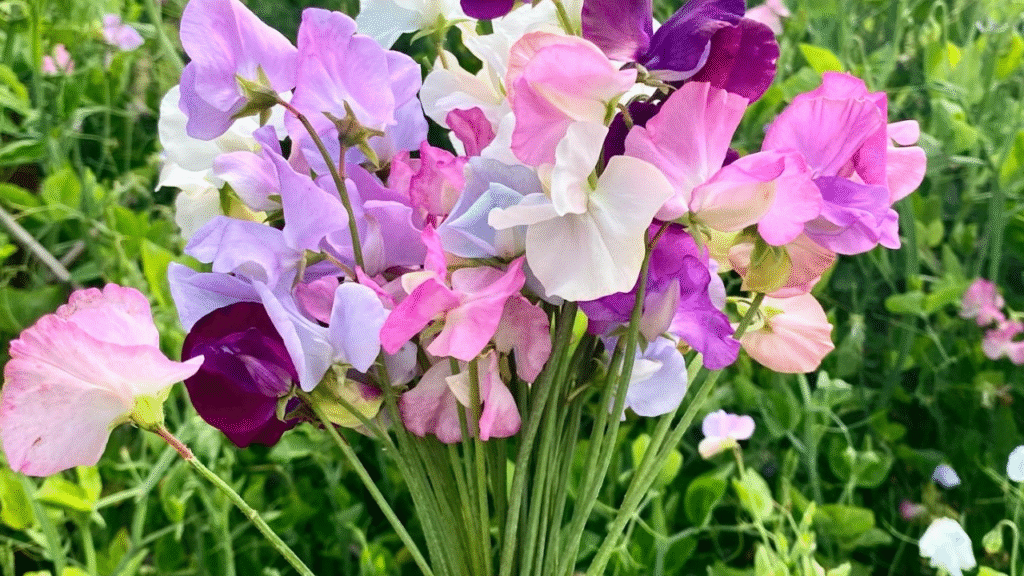
These fragrant flowers are loved for their scent and delicate look. They bloom in cooler months and work well for early spring weddings.
Anemones
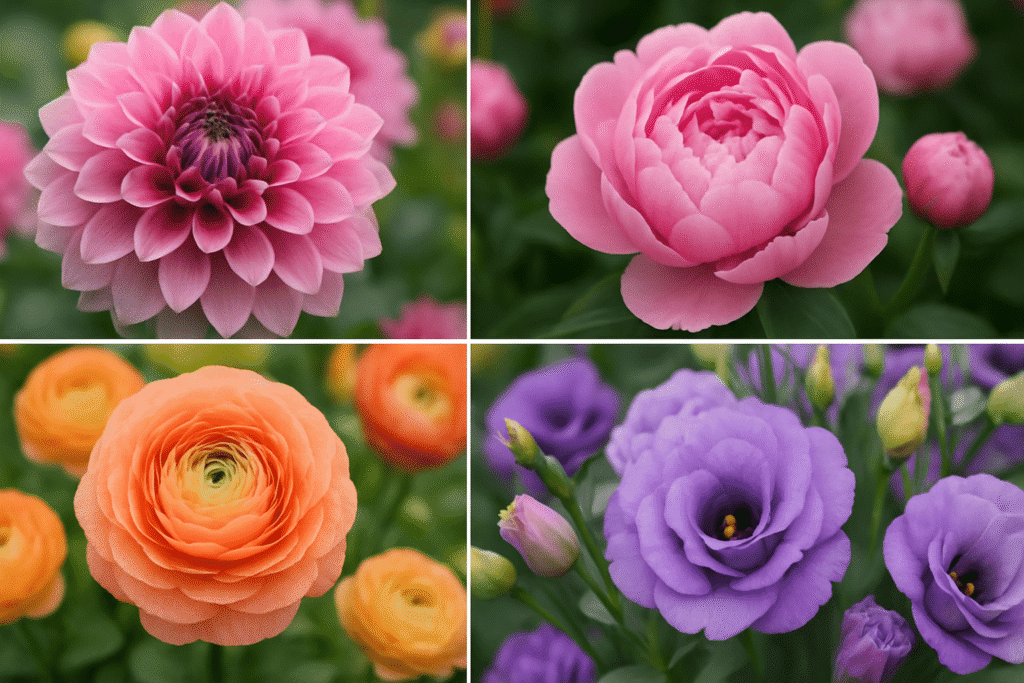
Anemones have striking black centers and come in vivid colors. They are a bit more sensitive but highly sought after by florists for their unique look.
Comparison Table: Top 10 High-Profit Flowers for Flower Farmers in 2025
| Flower | Bloom Time | Growing Conditions | Vase Life | Avg. Selling Price | Profitability |
|---|---|---|---|---|---|
| Dahlias | Mid-summer to fall | Full sun, well-drained soil | 7–10 days | $3.50 | High |
| Lisianthus | Summer | Partial shade, rich soil | 10–14 days | $4.00 | High |
| Peonies | Late spring | Cool climate, well-drained | 7–10 days | $5.00 | Very High |
| Specialty Tulips | Early spring | Cold winters, well-drained | 5–7 days | $3.00 | Medium-High |
| Ranunculus | Spring to early summer | Cool, well-drained soil | 7–10 days | $3.75 | High |
| Eucalyptus & Greenery | Year-round | Various, drought tolerant | 14+ days | $2.50 | Medium |
| Zinnias | Summer to fall | Full sun, heat tolerant | 5–7 days | $2.00 | Medium |
| Sunflowers | Late summer | Full sun, fertile soil | 5–7 days | $2.50 | Medium-High |
| Sweet Peas | Early spring | Cool climate, well-drained | 5–7 days | $3.25 | High |
| Anemones | Late winter to spring | Cool, well-drained soil | 7–10 days | $3.75 | High |
*Profitability Level is based on a combination of market demand, growing costs, and vase life.
Tips to Maximize Flower Farm Profits
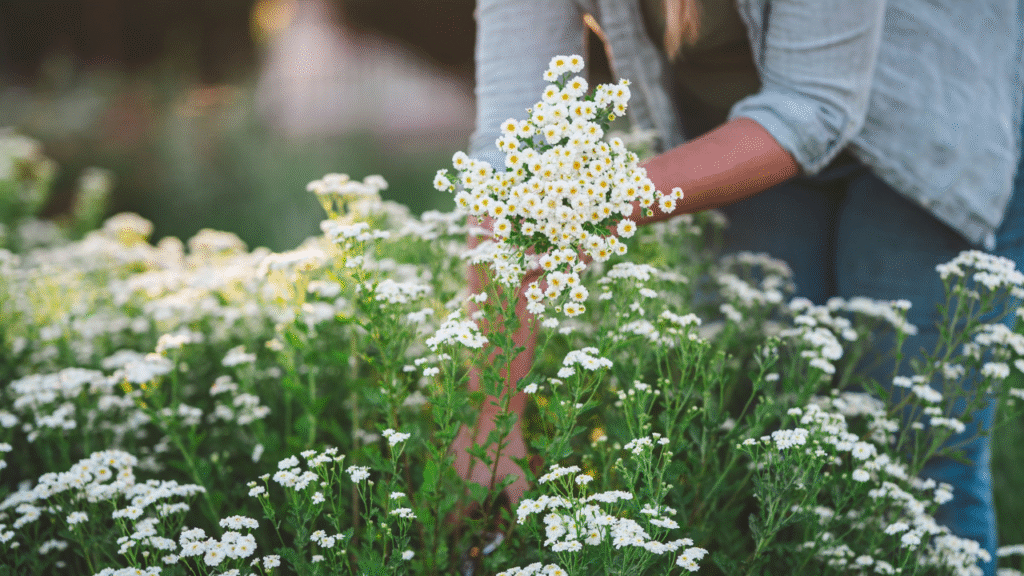
Smart Crop Planning and Succession Planting
One key to keeping your flower farm profitable is planning your crops wisely. When I started, I learned to stagger my planting dates so I always had fresh blooms ready to harvest. This technique, called succession planting, means you’re not stuck with one huge harvest all at once but have steady flowers coming in throughout the season.
Think of your garden as a calendar — plan early bloomers, mid-season favorites, and late-season flowers in a way that fills every week with something to sell. This not only maximizes your income but keeps customers coming back for more variety.
Intensive Plant Spacing for Maximum Yield
Growing flowers close together without crowding them too much can boost your yield per square foot. I experimented with spacing and found that certain flowers, like zinnias and sweet peas, can be planted more densely than others without affecting bloom quality.
Just be sure to provide enough airflow to prevent disease. Intensive spacing means you can grow more stems in the same area, increasing profits without needing more land.
Extending Seasons with Greenhouses or High Tunnels
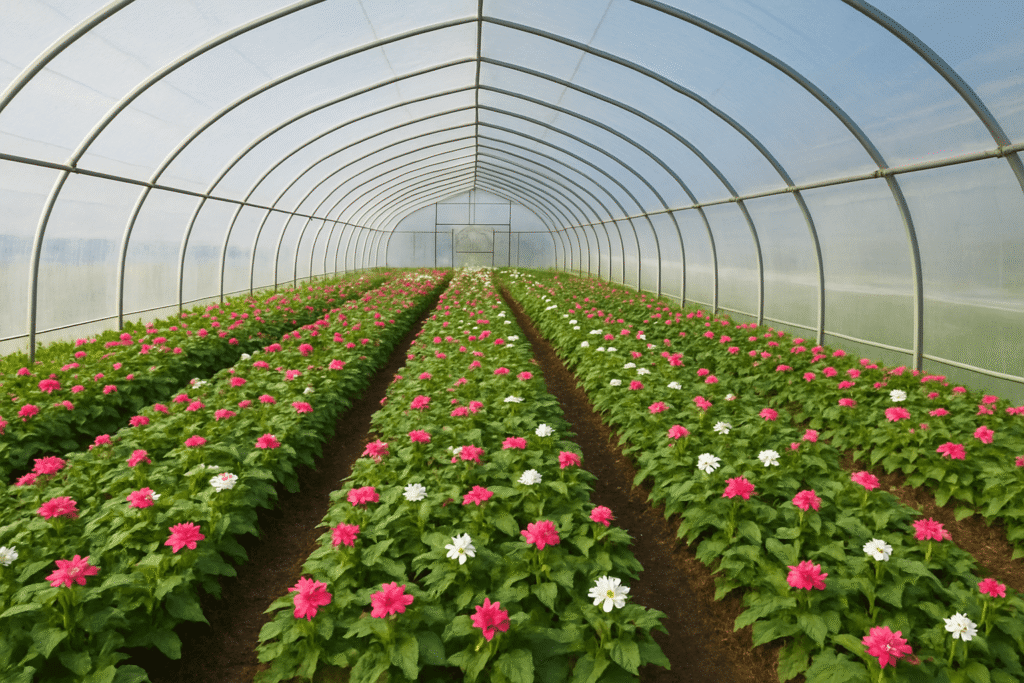
If you want to get ahead of the season or keep growing when the weather turns cold, investing in a greenhouse or high tunnel can be a game changer. I started with a simple hoop house, and it allowed me to start seedlings earlier and even grow tender flowers through mild winters.
This extension means you can hit the market earlier in spring and later into fall when flower availability is low — perfect for commanding higher prices.
Efficient Seed Starting and Nursery Management
Good flowers start with healthy seedlings. I can’t stress enough how much proper seed starting impacts your final harvest. Using seed trays, maintaining the right moisture, and hardening off plants before transplanting helped me improve survival rates and get stronger, more vigorous blooms.
Keeping a tidy nursery area and organizing seedlings by date and variety saves time and reduces mistakes during the busy planting season.
Best Sales Channels for Flower Farmers
Farmers Markets and Local Events
Selling at farmers’ markets was where I first found my customers. It’s a fantastic way to connect directly with buyers and get instant feedback. Local events like craft fairs or garden festivals can also boost your sales and build your reputation in the community.
Selling Directly to Florists and Designers
Building relationships with florists is essential if you want to sell larger volumes regularly. I started by visiting shops, offering samples, and asking what they needed most. This direct line lets you tailor your growing schedule and flower selection to what sells best.
Wedding and Event Contracts
Weddings can bring in big profits, especially if you secure contracts early. Partnering with wedding planners and florists to supply seasonal, specialty flowers ensures a steady demand during peak wedding months. Plus, brides love locally grown flowers with a story behind them.
Flower Subscriptions and CSA Models
Subscription services and Community Supported Agriculture (CSA) models are growing trends. Offering weekly or monthly flower boxes to customers provides predictable income and builds loyal clientele. I personally enjoy the creativity of designing fresh bouquets regularly for my subscribers.
Pricing Strategies for Sustainable Profits
How to Set the Right Price per Stem or Bouquet
Pricing can be tricky, but it boils down to covering your costs and valuing your labor. I calculate everything—from seeds and water to hours spent harvesting—and add a margin that feels fair. Research what local florists charge and don’t undervalue your product.
Avoiding Price Drops During Peak Season
During peak bloom times, it’s tempting to slash prices to sell fast. But I learned this hurts your bottom line and market perception. Instead, consider offering bouquet deals or value-added services like custom arrangements to maintain your pricing while moving more flowers.
Essential Tools and Supplies for Profitable Flower Farming
Must-Have Tools for Small-Scale Flower Farms
Some tools have been indispensable for me:
- Sharp pruning shears for clean cuts
- Harvest buckets with water to keep stems fresh
- Quality gloves to protect hands
- Seed trays and labels for organization
Investing in durable, reliable tools saves time and keeps your flowers healthy.
Soil Preparation and Fertility Management
Healthy soil is the foundation. I test my soil annually and amend it with compost and balanced fertilizers. Mulching helps retain moisture and reduce weeds, which means less time spent weeding and more focus on harvesting.
Final Thoughts: Building a Profitable Flower Farming Business
Starting a profitable flower farm takes patience, learning, and a lot of heart. But by choosing the right flowers, planning your crops smartly, and connecting with customers who appreciate your work, you can turn your passion into a thriving business. Remember, every flower you grow carries a story—and with care, it can also carry a paycheck.
FAQs for Beginners on High-Profit Flower Farming
Q1: How do I choose the best high-profit flowers for my region?
Start by researching your USDA hardiness zone and local climate. Talk to local florists and visit farmers’ markets to see what’s popular. Choose flowers that grow well in your conditions and have strong local demand.
Q2: Can I grow high-profit flowers on a small plot of land?
Absolutely! Many profitable flowers like zinnias and lisianthus can be grown intensively in small spaces. Succession planting and vertical growing methods can help maximize your yield.
Q3: How much time should I expect to spend daily on flower farming?
It varies by season, but expect to spend 1-3 hours daily during peak growing and harvesting periods. Efficient planning and good tools can reduce time and improve your harvest quality.

